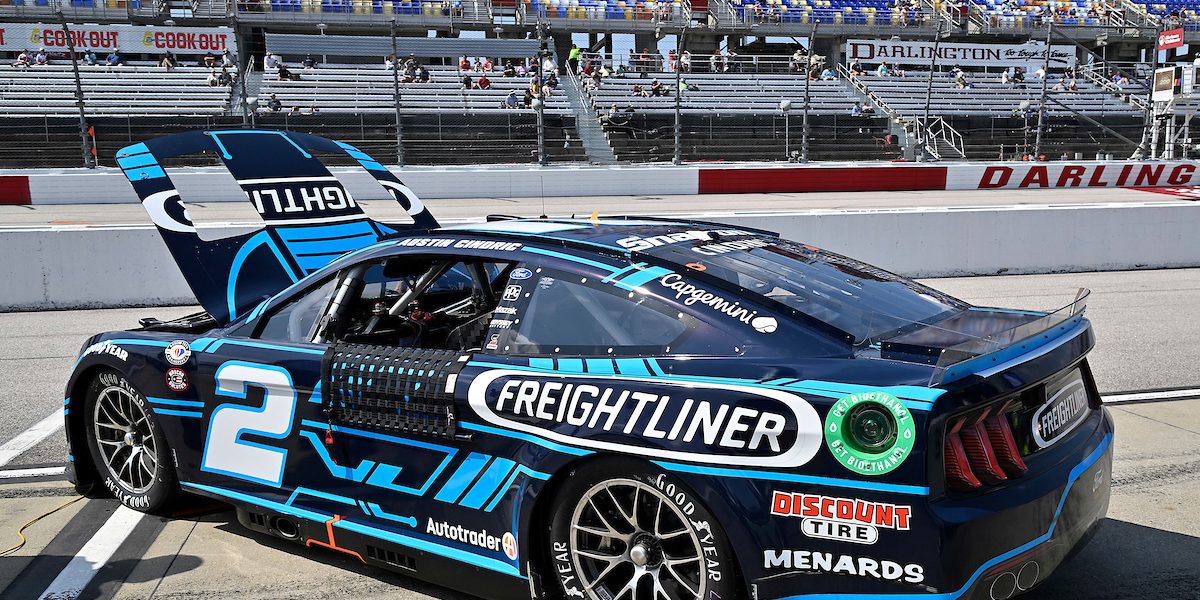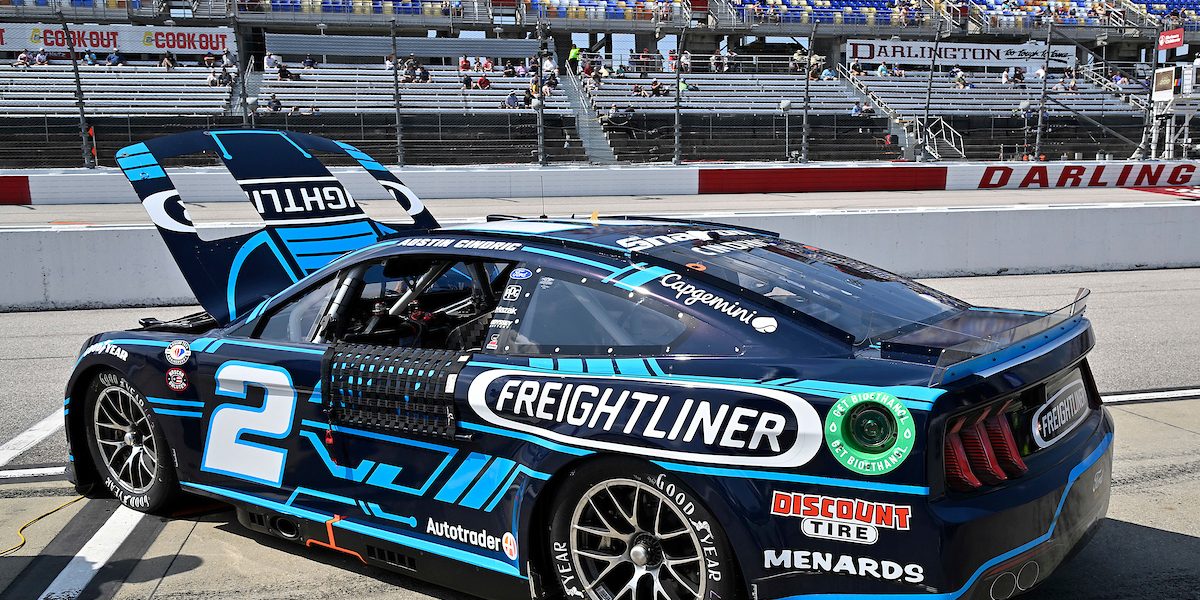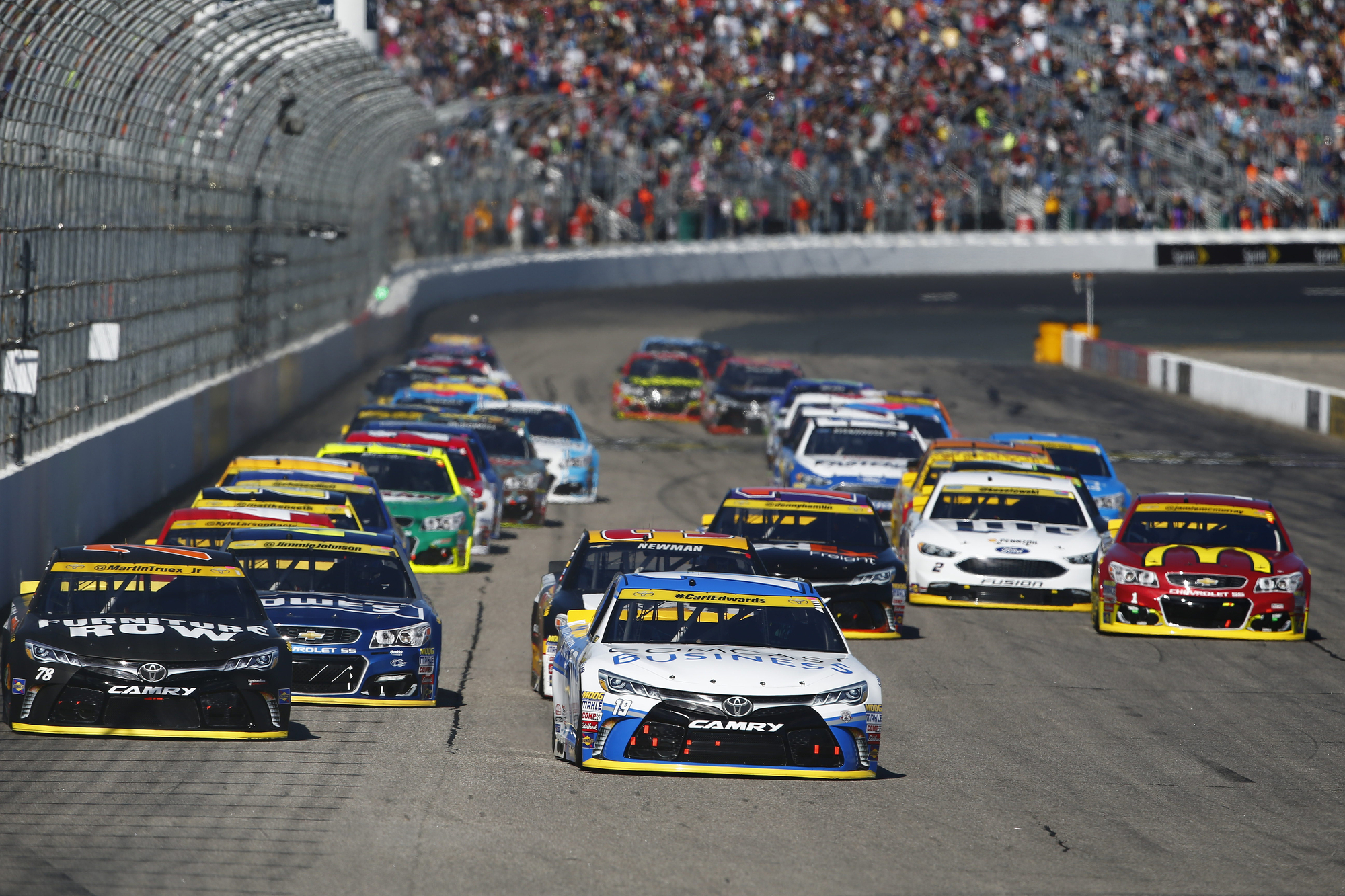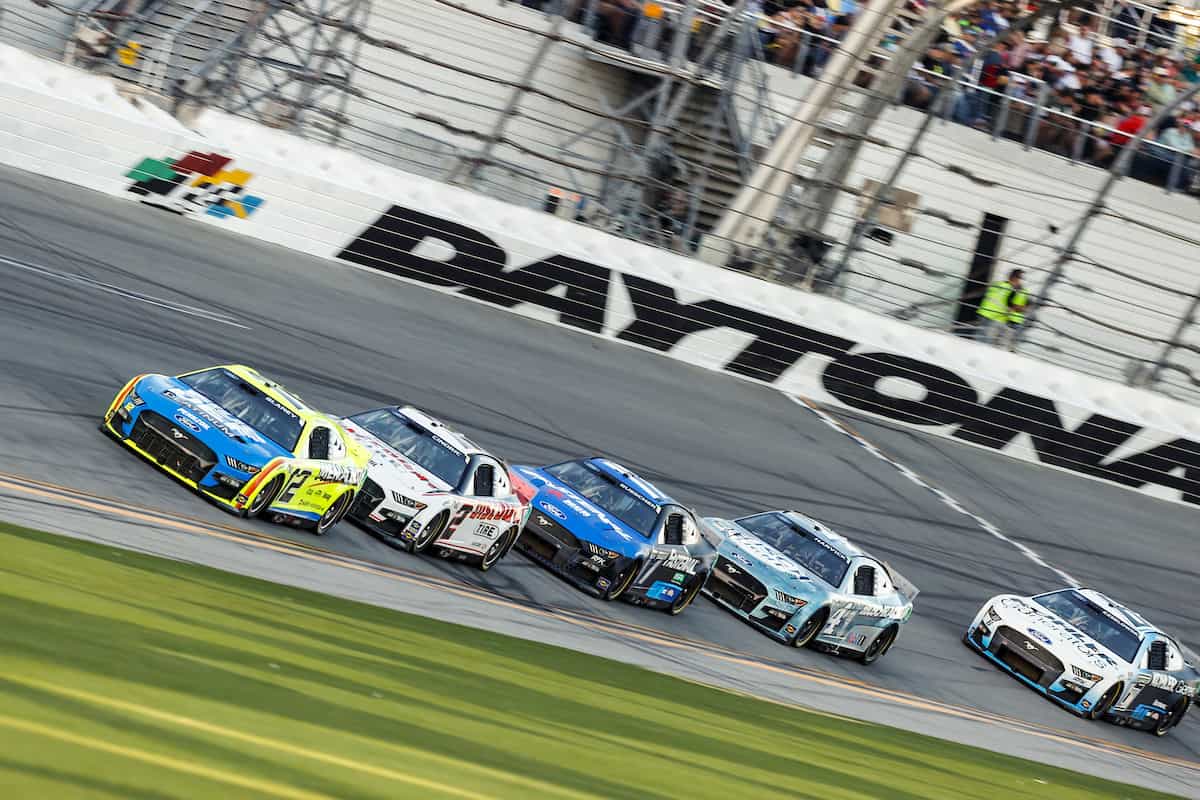How Much Does A Nascar Engine Cost?


How much does a NASCAR engine cost? The answer is not straightforward, as there are many factors that can affect the price of a NASCAR engine. However, on average, teams can expect to pay anywhere from $45,000 to $80,000 for an engine.
Why are NASCAR engines so expensive? For starters, these engines are highly specialized and designed specifically for racing. They need to be able to withstand extreme conditions such as high temperatures and high RPMs. This means that they require top-of-the-line materials and advanced technology.
Teams also spend a significant amount of money on research and development to improve their engines’ performance. They work with engineers and mechanics to fine-tune every aspect of the engine, from its fuel injection system to its exhaust system.
But the cost of a NASCAR engine doesn’t stop at its initial purchase price. Teams also need to factor in maintenance and repair expenses over the course of a racing season. These costs can add up quickly, especially if there are any major issues with the engine.
Despite their high cost, NASCAR engines are an essential component of any race car. They provide the power needed for drivers to reach incredible speeds on the track. Without them, NASCAR racing simply wouldn’t be possible.
Table of Contents
Factors Affecting NASCAR Engine Cost
Type of Engine and its Specifications
The type of engine and its specifications are among the most significant factors that affect the cost of a NASCAR engine. The engines used in NASCAR racing are highly specialized, with unique features that make them distinct from regular car engines. For instance, NASCAR engines have high horsepower ratings ranging from 750 to 900 hp, which is significantly higher than standard car engines.
NASCAR engines use advanced technologies such as fuel injection systems, roller cams, and dry sump oiling systems. These features not only enhance the performance of the engine but also increase their cost significantly due to their complexity.
Materials Used in Building the Engine
The materials used in building a NASCAR engine are also crucial determinants of their cost. Most NASCAR engines are made using lightweight materials such as aluminum and titanium alloys. These materials offer excellent strength-to-weight ratios that enable the engine to produce more power while remaining lightweight.
Moreover, these materials are expensive compared to conventional cast iron or steel used in regular car engines. For example, titanium is one of the most expensive metals globally and is commonly used in critical components such as valves and connecting rods in high-performance racing engines.
Level of Customization Required
The level of customization required by teams or drivers can also affect the cost of a NASCAR engine. Teams often request specific modifications to suit their driving style or track conditions. Such modifications may include changes to camshaft profiles, cylinder head designs, or exhaust systems.
Customizations require additional time and resources during manufacturing hence increasing overall costs significantly. Some teams may opt for custom-made parts instead of off-the-shelf components leading to further increases in costs.
Number of Engines Needed
Finally, another factor affecting the cost of a NASCAR engine is the number needed for a season or race event. Typically teams will use multiple engines throughout a season due to wear and tear resulting from intense racing conditions. As such, teams must budget for purchasing new engines or rebuilding existing ones.
The more engines a team requires, the higher the overall cost of engine maintenance and replacement. Some teams may opt for leasing engines from specialized engine builders to save on costs. However, leasing an engine may limit customization options, affecting performance during races.
Comparison of NASCAR Engine Cost to Other Expenses
Transportation, salaries, and equipment are just a few of the many expenses that come with fielding a NASCAR team. However, one of the most expensive parts of this venture is the engine. The cost of a NASCAR engine can range from $45,000 to $80,000 per engine. While this may seem like an exorbitant amount of money for just one part, it is only a fraction of the total budget that teams spend each year.
Compared to other expenses such as transportation costs, which can run up to $1 million per year for some teams, or salaries for drivers and crew members that can reach into the millions as well, the cost of an engine seems relatively small in comparison. In fact, teams spend millions of dollars each year on these other expenses alone. For example, according to Forbes magazine’s 2019 report on NASCAR team values and earnings, Hendrick Motorsports spent over $40 million on driver salaries alone in 2018.
Despite being just one component of many expenses associated with fielding a NASCAR team, engines play a crucial role in determining a car’s performance on the track. As such, teams prioritize investing in high-quality engines that will give them an edge over their competitors. In addition to purchasing new engines outright from manufacturers like Toyota or Chevrolet, some teams also choose to lease engines from independent companies like ECR Engines or Roush Yates Engines.
Moreover, investing in quality engines can lead to long-term savings for teams as well. While they may be expensive upfront costs initially, high-quality engines tend to last longer and require less maintenance than cheaper alternatives. This means that teams will not have to replace them as frequently and will ultimately save money in the long run.
Understanding NASCAR Engines: Types and Specifications
Single Camshaft vs Double Camshaft Engines: What’s the Difference?
NASCAR engines are designed to deliver maximum horsepower and torque output, while also withstanding the extreme conditions of high-speed racing. There are two main types of NASCAR engines: the single camshaft and the double camshaft. The single-camshaft engine is used in the NASCAR Truck Series, while the double-camshaft engine is used in the Cup Series.
The single camshaft engine features a single overhead cam (SOHC) design, which means that it has one camshaft that operates both intake and exhaust valves. This type of engine is less complex than its double camshaft counterpart, making it easier to maintain and repair. It also offers good low-end torque, which is important for truck racing where heavy loads need to be moved quickly.
On the other hand, the double camshaft engine features a dual overhead cam (DOHC) design, which means that it has two separate cams – one for intake valves and one for exhaust valves. This design allows for better control over valve timing and lift, resulting in improved performance at higher RPMs. The Cup Series cars require this kind of power output as they race on bigger tracks than trucks.
Chassis Design Matters
The chassis of a NASCAR car is designed to accommodate the type of engine that will be used in a particular race. For example, if a team plans to use a single-cam engine in their truck during a race weekend, they will use a chassis designed specifically for that type of engine.
Similarly, if a team plans to use a double-cam engine in their cup car during qualifying races or main events, they will use a chassis designed specifically for that type of engine as well. The weight distribution must be perfect so that no part fails during high-speed racing.
Qualifying Races: Engine Performance Matters
Qualifying races are an important aspect of NASCAR racing because they determine starting positions on the grid. During these races, drivers push their cars to the limit to achieve the fastest lap times possible. The performance of their engines plays a crucial role in this process.
A well-tuned engine can make all the difference when it comes to qualifying for a race. Teams will often spend hours fine-tuning their engines to ensure that they are running at peak performance during qualifying races.
The Cost of NASCAR Engines
The cost of a NASCAR engine can vary depending on its specifications, such as horsepower and torque output. These factors are determined by various factors, such as the type of engine and materials used in its construction.
While the cost of a NASCAR engine can be high, it is important to note that these engines are designed to withstand extreme conditions and last for several races if properly maintained. It is not uncommon for teams to rebuild or refresh their engines after every few races.
History of NASCAR Engines and Technological Advancements
Early Days of NASCAR Engines
In the early days of NASCAR, engines were often modified versions of stock engines found in regular cars. These engines had limited horsepower and top speeds, making it difficult for drivers to complete races quickly. However, as racing became more popular and televised, the demand for faster and more powerful engines grew.
Specialized Race Car Engines
This led to the development of specialized race car engines that were designed specifically for racing. These engines were built with high-performance parts and advanced engineering techniques that allowed them to produce more power than ever before. As a result, drivers could reach higher speeds and complete races in just a few hours or less.
Technological Advancements in NASCAR Engines
Today’s NASCAR engines are highly advanced, with features like fuel injection systems, electronic control units, and high-performance parts designed specifically for racing. These advancements have allowed drivers to push their cars to the limit and achieve even faster speeds than ever before.
Fuel Injection Systems
One of the most significant technological advancements in recent years has been the introduction of fuel injection systems. This system allows for precise control over how much fuel is delivered to the engine at any given time, resulting in better performance and improved fuel efficiency.
Electronic Control Units
Another major advancement has been the use of electronic control units (ECUs). These devices allow engineers to monitor every aspect of an engine’s performance in real-time, making it easier to identify issues before they become serious problems.
High-Performance Parts
Finally, high-performance parts have played a critical role in improving NASCAR engine performance over the years. From lightweight pistons to custom camshafts, these parts are designed to withstand extreme temperatures and pressures while delivering maximum power output.
How Much Does a NASCAR Engine Cost?
NASCAR racing is a high-octane sport that requires top-of-the-line equipment to remain competitive. One of the most critical components of a NASCAR race car is its engine. The cost of a NASCAR engine can vary widely, depending on several factors.
Cost Factors
The cost of a NASCAR engine can range from $45,000 to $80,000 or more. Several factors influence the price tag, including the type of engine, level of competition, and team budget. Cup Series engines are typically more expensive than those used in lower-level series due to their higher performance capabilities. Investing in research and development for custom-built engines can drive up costs even further.
Maintenance Costs
While purchasing a new engine is costly enough, maintaining and rebuilding an existing engine can add up quickly as well. Teams must regularly inspect and rebuild their engines throughout the season to ensure optimal performance on race day. These maintenance costs include replacing worn-out parts like pistons, valves, and camshafts.
Investment Necessity
Despite the high cost associated with buying and maintaining NASCAR engines, it’s crucial for teams to invest in these high-performance machines if they want to remain competitive in today’s racing environment. A powerful engine can mean the difference between winning or losing a race by mere seconds. With millions of dollars at stake each season for teams and sponsors alike, investing in top-quality equipment like engines is essential.
Legal Considerations When Buying a NASCAR Engine
NASCAR engines are highly regulated by the organization to ensure fair competition among teams. It is important to consider legal factors when purchasing a NASCAR engine, as non-compliance can lead to disqualification and even legal action. In this section, we will discuss the legal considerations that must be kept in mind when buying a NASCAR engine.
Check for Compliance with NASCAR’s Rules and Regulations
Before making any purchase, it is crucial to check if the engine you are considering complies with NASCAR’s rules and regulations. These rules are put in place to ensure fair play among all teams. NASCAR has strict guidelines on what modifications can be made to an engine, including its size, weight, horsepower, and other specifications. Any deviation from these guidelines can result in penalties or disqualification from races.
Sealed Approval by Officials
NASCAR requires all engines used in races to be sealed and approved by officials before they can be used on the track. The seals help ensure that no unauthorized modifications have been made to the engine since it was last inspected. This rule applies not only to new engines but also used ones that have been rebuilt or modified.
Risks of Purchasing Used Engines
While purchasing a used engine might seem like a cost-effective option, it comes with risks. There is always a possibility that the engine may not meet NASCAR’s standards or may even be illegal due to unauthorized modifications made by previous owners. Therefore, it is essential to purchase engines from reputable suppliers who have a history of providing compliant and legal engines.
Reputable Suppliers
It is recommended that you buy your NASCAR engine from reputable suppliers who have experience working within the industry. Such suppliers understand the rules and regulations set forth by NASCAR and know how best to adhere to them while still delivering high-quality products. They should also provide documentation proving compliance with all necessary requirements for each engine they sell.
Maintaining, Storing, and Rebuilding NASCAR Engines
Regular Maintenance is Key
Maintaining a NASCAR engine is crucial to ensure that it performs at its best during races. These high-performance racing engines require regular maintenance, including oil changes, valve adjustments, and inspections for wear and tear on components such as pistons, camshafts, and bearings. Neglecting regular maintenance can lead to decreased performance on the track or even engine failure.
Race teams typically have multiple engines for their race cars, which they rotate and rebuild throughout the season to keep them in top condition. During a typical race weekend, a team may use up to three engines per car – one for practice sessions, one for qualifying, and one for the actual race. After each use, the engine undergoes a thorough inspection before being rotated out for another engine.
Proper Storage is Crucial
Storing a NASCAR engine properly is just as important as maintaining it. Engines should be stored in a clean and dry environment with controlled temperature and humidity levels. Moisture can cause rust on metal components while extreme temperatures can cause damage to seals and gaskets.
To prevent any issues from arising during storage periods between races or seasons, teams will often perform “pickling” procedures on their engines. This involves coating the inside of the engine with oil or other protective fluids to prevent corrosion from moisture buildup.
Rebuilding Engines Takes Time and Skill
Despite regular maintenance efforts, NASCAR engines will eventually need rebuilding due to wear and tear over time. Rebuilding an engine involves disassembling it completely before inspecting each component individually for wear or damage.
Once inspected, any parts that are not up to spec are replaced with new ones. The process of rebuilding an engine can take several days depending on how extensive the damage is.
In addition to routine maintenance tasks like oil changes and valve adjustments, proper storage techniques are essential in ensuring optimal performance from your NASCAR engine. Regularly rotating multiple engines throughout a season can also help prolong their lifespan. However, eventually rebuilding an engine will be necessary to keep it in top condition. This process requires specialized knowledge and equipment, making it essential to work with a knowledgeable and experienced team of professionals.
Future of NASCAR Engines: Next Gen and Cost Reductions
Next Gen NASCAR engines are set to debut in the 2022 season. This new engine will have a single supplier and is expected to reduce costs for teams and create a more level playing field. NASCAR has implemented cost-saving measures such as limiting the number of engines teams can use per season and reducing the number of tests allowed.
Single Supplier Model
The Next Gen NASCAR engine is designed to be more efficient and cost-effective than its predecessor. The new engine will feature a single supplier model, which means that all teams will receive their engines from one manufacturer rather than building them in-house or sourcing them from different suppliers. This move is expected to significantly reduce costs for teams, as they will no longer need to invest in expensive engine development programs or purchase engines from multiple suppliers.
Cost-Saving Measures
NASCAR has also implemented several cost-saving measures aimed at reducing the overall cost of racing. One such measure is limiting the number of engines teams can use per season. Previously, teams were allowed an unlimited number of engines per season, which often led to excessive spending on engine development and maintenance. With this new rule in place, teams must now carefully manage their engine usage throughout the season, which should help reduce costs.
Another cost-saving measure implemented by NASCAR is reducing the number of tests allowed during the season. Teams are now limited to just a handful of testing sessions each year, which helps reduce travel expenses and saves money on equipment and personnel costs.
The True Cost of Fielding a Winning NASCAR Team
The true cost of fielding a winning NASCAR team is not just about the price tag of a single engine. It involves a complex web of factors that can make or break a team’s chances on the track. From the types and specifications of engines to legal considerations, maintaining and rebuilding engines, and keeping up with technological advancements, there are many aspects that contribute to the overall cost of running a successful NASCAR team.
One key factor is understanding the different types and specifications of NASCAR engines. Teams have to consider which type of engine will best suit their needs, whether it’s a carbureted or fuel-injected engine, and what horsepower and torque ratings they require. These decisions can impact both performance on the track as well as the cost of purchasing and maintaining an engine.
Another important consideration is staying up-to-date with technological advancements in NASCAR engines. As new technologies emerge, such as hybrid systems or alternative fuels, teams must decide whether to invest in these innovations to stay competitive.
Legal considerations also come into play when buying a NASCAR engine. Teams must ensure that their engines meet all regulations set by NASCAR officials, such as maximum displacement limits and horsepower restrictions.
Maintaining, storing, and rebuilding engines are also significant costs for teams. Engines require regular maintenance to keep them running at peak performance throughout the season. Storing them properly during off-seasons is crucial for preserving their longevity. And when an engine does need repairs or rebuilds due to wear-and-tear or damage from accidents on the track, it can be costly for teams.
When considering all these factors together – types/specifications of engines, technological advancements, legal considerations, maintenance/rebuilding costs – it becomes clear that fielding a winning NASCAR team requires significant financial investment beyond just purchasing an engine.










